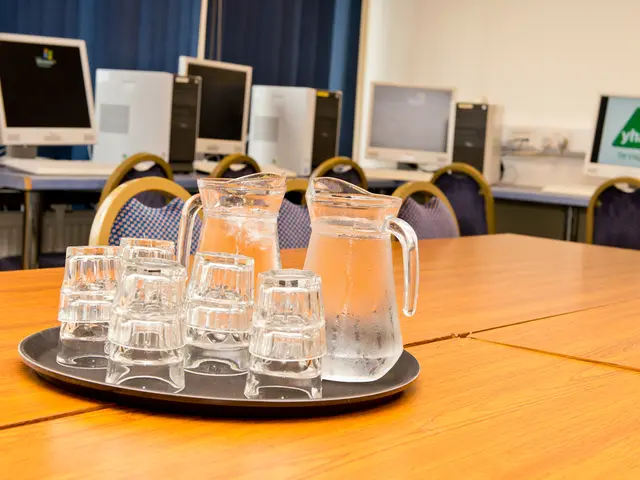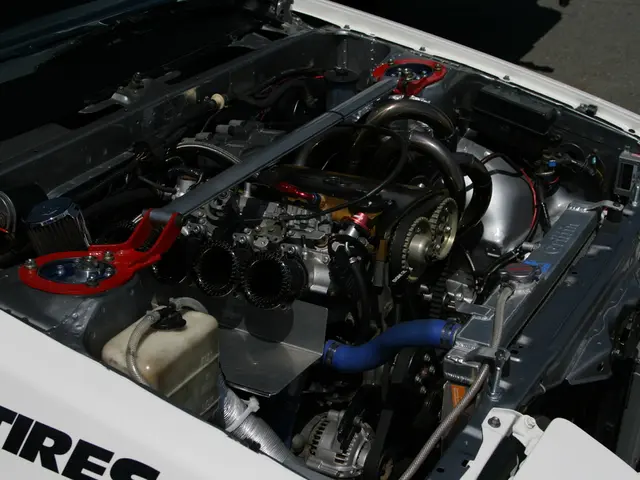Embracing Innovation: Volvo's Revolutionary Multi-Adaptive Safety Belt
Volvo invents a virtual seatbelt for digital reality experiences
Benny, an emergency responder from Lake Ammer, can't help but rave about seat belts, especially after witnessing the dramatic impact they've had on saving lives. "Airbags and assistance systems mitigate the consequences of severe crashes, but most people would likely be dead without a fastened seat belt," he says. However, he's not entirely satisfied with the traditional seat belt's performance. "It's still a bit harsh and can even cause injuries," he adds, reinforcing the need for improvement in this life-saving device.
Enter Volvo's innovative team of safety experts based in Sweden, who are poised to transform the classic seat belt. Their game-changing "multi-adaptive safety belt" offers a solution tailored to different occupants and traffic situations. Instead of a one-size-fits-all approach, this intelligent system uses real-time data from a multitude of sensors to deliver a personalized crash response.
" Classic seat belts have saved numerous lives, but they're still quite dated," says Lotta Jakobsson, an accident researcher. Volvo's multi-adaptive safety belt addresses this issue by optimizing its force to the occupant's size, weight, body shape, seating position, and even the crash situation itself. This breakthrough in seat belt technology could prevent numerous painful crash consequences.
Previously, belt force limiting profiles were available, but only a limited number could be used due to the lack of connection to data computers, sensors, and cameras. Volvo, with their upcoming fully electric EX60, will leapfrog this limitation by nearly quadrupling the number of available profiles, thanks to advanced computing capabilities. "In all new vehicles on this platform," promises technical director Anders Bell, "the belt will become even smarter and more sensitive, as we continuously feed new data from our crash tests, real accidents, or previous evaluations of vehicle data into the system."
A Digital Web of Protection
The belt isn't the only aspect of safety that benefits from digital networking. The software on wheels unlocks numerous protective systems for the future. A complex system of cameras, radar, lidar, and computing technology creates a digital cocoon that keeps a constant eye on the vehicle and its surroundings.
Volvo has been a trailblazer in safety since the 1970s, having evaluated over 43,000 real accidents involving more than 72,000 people. This vast and in-depth database forms the foundation for many of their safety solutions now in series production. In the upcoming Volvo EX90, for instance, the introduction of "Safe Space Technology" promises a safer future. At its heart is a powerful central computer that processes real-time data from cameras, radar, and lidar, enabling the vehicle to detect potential hazards quickly.
Volvo also employs advanced facial recognition technology to monitor the driver's condition, alerting them if they're drowsy, distracted, or disengaged. If necessary, the system can even take control of the vehicle and contact emergency services. This level of monitoring, already mandated in many countries, has garnered both supporters and critics, including privacy advocates.
Regardless, the trend towards increasingly powerful and connected safety data shows no signs of stopping. Everyone from government agencies to insurers and service providers is eager to tap into these valuable insights, as vehicles become smarter, more predictive, and safer. The future is certainly an exciting place for car safety!
- Volvo Models
- Road Traffic
The Volvo team's innovative multi-adaptive safety belt, a game-changer in seat belt technology, could extend its benefits beyond crash response by incorporating data from health-and-wellness sensors, optimizing seat belt force based on an individual's health status for improved safety.
In addition to the advanced safety systems in Volvo vehicles, the company's focus on vocational training and continuous learning could lead to the development of technology that leverages science to create healthier and more efficient communities, fostering a safer and more productive future for all.




